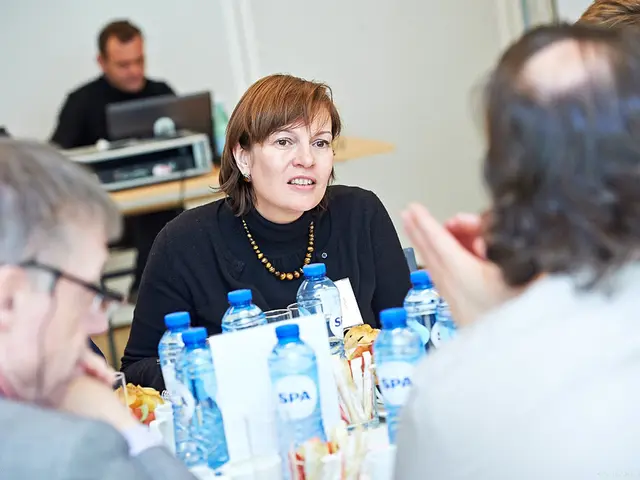Energy transformation in Europe requires increased interconnectedness. It's the North Sea that offers a potential starting point for this integration.
The North Sea, a vast expanse of water, is poised to become a hub for renewable energy, with the potential to surpass the sum of all nuclear power plants worldwide. This transformative shift is driven by the ambitious targets set by EU Member States and Norway, aiming to install at least 300 gigawatts (GW) of offshore wind turbines by 2050.
However, the road to this renewable future is not without its obstacles. Three main challenges have been identified for offshore energy: the time dimension, the planning dimension, and the need for integrated assessment of electricity, gas, and hydrogen networks.
The time dimension requires project developers and grid operators to anticipate the future energy system needs and localise them early enough. The planning and construction of costly new energy networks can take decades, making timely decision-making crucial.
The planning dimension is further complicated by the need for integrated assessment. The interplay between electricity, gas, and hydrogen networks, as well as the emerging role of captured carbon, necessitates a holistic approach to planning and management.
In addressing these challenges, the authors of two new papers recommend an Independent System Operator to identify priorities for integrated grid and market management. This operator would play a vital role in balancing centralised and decentralised elements of European energy infrastructure.
New floating offshore technologies increase the wind energy potential for sea basin areas beyond shallow waters. This technological advancement, combined with the maturity of the offshore wind industry, promises robust growth plans for offshore renewables.
However, the question of how to get the huge renewable energy potential to consumers remains. Installing wind farms in deep seabed raises this question, and the authors of the e-paper compare the specific challenges of networks for transporting electricity, gas, hydrogen, and captured carbon.
One proposed solution is a meshed offshore grid, which would connect national grids more efficiently, reducing the number of undersea cable connections required. Modelling by Imperial College consultants expects up to €50bn of savings by 2050 from such a grid, potentially lowering more consumers' electricity bills.
Yet, the financial dimension of offshore wind farms involves high costs for undersea cable connections. This might be challenging for the multiplication of cross-national investments required on a short term for hundreds of gigawatts from the North Sea.
The EU and its neighbours currently have no harmonised process for prioritising and speeding up the urgently needed update of energy infrastructure. The European Commission's Grid Action Plan of November 2023 made the common identification of offshore grid needs a priority.
The Clean Industrial Deal of the new European Commission aims to make European industries more competitive in the global run for key technologies of the energy transition, with access to cheap renewable power through well-connected grids being a prerequisite.
In this context, the North Seas Energy Cooperation (NSEC), integrating the non-EU country Norway and potentially opening its doors for formal cooperation with the UK, could play a significant role.
However, challenges remain. The clash between French, Spanish, and German governments about the H2Med hydrogen pipeline project in 2022 underscores the need for effective cross-border cooperation.
Moreover, the Swedish government's rejection of an application for building a subsea electricity interconnector to Germany in June 2024 highlights the need for a unified approach to energy trading.
Simon Skillings, in an additional analysis, shows how integrated planning in the North Sea can cut costs and advance European energy infrastructure policies. Neighbouring countries together would need to commit to both new cross-border corridors for different energy carriers and to decommissioning of fossil gas pipelines.
In conclusion, the transition to a renewable energy future is not without its challenges. However, with integrated planning, cooperation, and a focus on the interplay between different energy networks, Europe can overcome these hurdles and pave the way for a sustainable, renewable energy system.
Read also:
- Peptide YY (PYY): Exploring its Role in Appetite Suppression, Intestinal Health, and Cognitive Links
- Toddler Health: Rotavirus Signs, Origins, and Potential Complications
- Digestive issues and heart discomfort: Root causes and associated health conditions
- House Infernos: Deadly Hazards Surpassing the Flames





